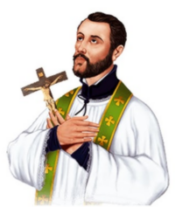HISTORY OF THE DIOCESE

In 1878 the territory, which now forms the dioceses of Mangalore, Kannur and Calicut was separated from the Vicariate Apostolic of Malabar by the Bull of Pope Plus IX and entrusted to the Jesuits of the province of Venice as a separate Vicariate Apostolic. Subsequently, this Vicariate Apostolic was raised to the status of a diocese with its Episcopal See at Mangalore and called the diocese of Mangalore. The diocese of Calicut, the 25th diocese of India was erected by an Apostolic Brief “Cum AuctusFideliumGrex”, dated June 12, 1923 of Pope Pius XI, by separating from the diocese of Mangalore that portion of the Malabar district and adding on to it the Wayanad Taluk, till then under the diocese of Mysore. Likewise the area west of the watershed of the Walluvabad Taluk, till then under the diocese of Coimbatore was added to the diocese. By a Decree of the Sacred Congregation of Propaganda Fide dated January 12, 1960, the Hosdurg Taluk, till then part of the diocese of Mangalore, was added to the diocese of Calicut.
The extent, therefore, of the diocese may be described as the whole of the former Malabar district up to the ponnani river, part of Palakkad district and the area of the watershed of Valluvanad Taluk, with the addition of the present Hosdurg taluk on the north till Chandragiri river. At the time of erection it numbered in all 8000 Catholics, the majority of whom resided in the three old stations along the shore of the Arabian sea, viz. Calicut, Tellicherry and Cannanore. Mainly due to the steady influx of immigrants from Travancore and Cochin, the total Catholic population had risen by 1953 to 91, 384 of which 17,217 were Latins and the rest Syrians. On March 19, 1954 with the erection of the diocese of Tellicherry, the faithful of the Oriental Rite passed under the jurisdiction of the Ordinary of the diocese or Tellicherry. His holiness Pope John Paul II has created the dioceses of Kannur by bifurcating the diocese of Calicut on December 9, 1998 appointing Rt Rev. Dr Varghese Chakkalackal as its first Bishop. The new diocese consists of the revenue districts of Kannur and Kasargod.
For the first 32 years of its existence the diocese of Calicut was entrusted to the Mangalore-Calicut Mission of the Society of Jesus, but with the erection of the independent Vice-Province of Mangalore on May 29, 1955, the territory of the diocese of Calicut was temporarily assigned to the Madurai province of the society of Jesus, pending the erection of the independent Vice-Province of Kerala, which took place on September 27, 1960. The Jesuit Vice- Province became Kerala Jesuit Province in the year 1983. Bishop Paul Perini, S.J. (1923-1932), Bishop Leo Proserpio, S.J. (1938- 1945), Msgr. PancratiusZanolinS.J. (1945-1948) and Bishop Aldo Maria PatroniS.J. (1948-1980) were the prelates of the diocese who belonged to the Society of Jesus. With the appointment of Rt Rev. Dr Maxwell V. Noronha as the Bishop of Calicut, who took charge of the diocese on September 8, 1980, the administration of the diocese passed into the hands of the diocesan Clergy. On May 19, 2002 Rt Rev. Dr Joseph Kalathiparambil was appointed as the fifht Bishop of the diocese by the Holy See. On June 10, 2012, Bishop VergheseChakkalakkal took over the administration of diocese.
Malabar Mission: 1492- 1923

FORMATION OF CALICUT DIOCESE
On 12th June 1923 Malabar was separated from the Diocese of Mangalore and formed the Diocese of Calicut. The first Bishop appointed was Rt. Rev. Dr. Paul Perini S.J. The prime Catholic centres then were Calicut, Tellicherry, Kannur, Vythiri and ManantavadyBesides these there were chapels in Shoranur, Malappuram, West Hill,Chalil, Dharmadam, Thayyil, Pallikunnu and Kolayad. The Churchin Mahe was under the Pondichery Diocese. Now there are 69churches including Parishes and Mission centres.
When the Diocesewas erected there were only about 6000 Catho- lics. The Catholicpopulation of the Diocese now are about 50250. 12 Jesuits and4 Diocesean priests did the work of shepherding the flocks. Nowthere are 103 priests both Religous and Diocesan priests serve in theDiocese. The Apostolic Carmel was the only religious congregation forwomen in the Diocese and they had three convents and fifty sistersdoing service in the educational of field. Now there are 58 conventsof various congregations and 700 sisters render their service in theschools, hospitals, nursing homes and orphanages. In the place of 12schools there are 115 schools in the Diocese now. Bishop Paul Perinigave priority to the development process of the Diocese duringhis episcopate. His Lordships brought Sisters of Charity from Mangaloreto render charitable service in the Diocese. On 21st October 1923St.Vincent’s Home was opened in Calicut and admitted homelesschildren and women there. With the blessing and cooperation ofthe Bishop, Brother Aloysius SpinellyS.J. established St. Vincent’sIndustrials in Calicut which rose to the level of a first gradeIndustry in South India. The institute gave technical training tothe poor and jobless labourers and made job opportunities formany. In order to achieve self sufficiency for the Diocese HisExcellency bought the Chellotte Estate and turned it into a coffeeandtea plantation estate. Mr. W.F. Gifford was appointed as thefirst superintend of the Estate. His Lordship Bishop Perini S.J. whowished to set up a strong foundation for the Diocese passed awayin Bangalore on 28th June 1932. After the demise of the first Bishop,the administration was looked after by Rt. Rev. Fr. Benyamin MariaRanzaniS.J. He was able to bring the Sisters of the Ursulines ofMary Immaculate to the Diocese in the year 1934 and the Sistersof the Bridgetine order in 1937. He the Holy Redeamer Churchat Marikunnu and the church of Our Lady of Lourdes at Perintalmanna.
